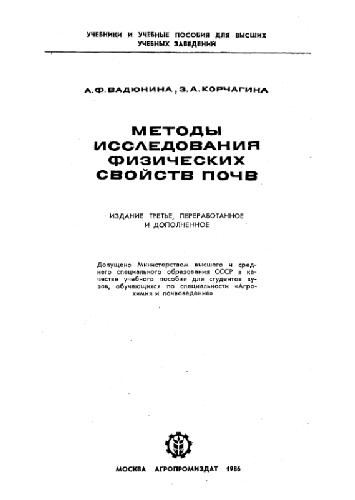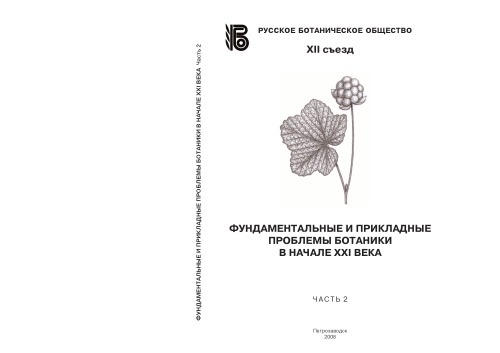- 2 402 202 книги
- Поиск
libcats.org










Handbook of Seed Physiology: Applications to Agriculture
Roberto Benech-Arnold, Rodolfo S?nchezThe latest findings in seed physiology—discussed as they relate to agricultural problems!
Presenting the latest findings in the area of seed physiology as well as the practical applications of that knowledge in the field, the Handbook of Seed Physiology: Applications to Agriculture provides a comprehensive view of seed biology and its role in crop performance. Key topics include seed germination, crop emergence, crop establishment, dormancy, preharvest sprouting, plant hormones, abscisic and giberellic acids, weeds, grain quality, oil crops, and malting quality. Abundant case studies provide information of value to researchers, students, and professionals in the fields of seed science, field crop research, crop science, agronomy, and seed technology.
The Handbook of Seed Physiology discusses vital topics which serve as the basis for the development of techniques and processes to improve seed performance and crop yield. In this text, you will explore:
Presenting the latest findings in the area of seed physiology as well as the practical applications of that knowledge in the field, the Handbook of Seed Physiology: Applications to Agriculture provides a comprehensive view of seed biology and its role in crop performance. Key topics include seed germination, crop emergence, crop establishment, dormancy, preharvest sprouting, plant hormones, abscisic and giberellic acids, weeds, grain quality, oil crops, and malting quality. Abundant case studies provide information of value to researchers, students, and professionals in the fields of seed science, field crop research, crop science, agronomy, and seed technology.
The Handbook of Seed Physiology discusses vital topics which serve as the basis for the development of techniques and processes to improve seed performance and crop yield. In this text, you will explore:
- the effect of the soil physical environment on seed germination
- the roles of physiology, genetics, and environment in the inception, maintenance, and termination of dormancy
- the relationship between the termination of dormancy and the synthesis and signaling of gibberellins and abscisic acid
- mechanisms of orthodox seed deterioration and approaches for repair of seed damage
- characteristics, behavior, and mechanisms of desiccation tolerance in recalcitrant seeds
- the role of seed moisture in free radical assaults on seeds and the protective function of raffinose oligosaccharides
- the production of free radicals and their effect on lipids and lipid peroxidation
- components of grain quality in oil crops and factors influencing them
- structural components and genotypic and environmental factors affecting barley malting quality
- screening protocols for germination tolerance to temperature and water stress
- methods for improving seed performance in the field
- techniques for controlling preharvest sprouting of cereals
- breeding and production strategies for improving grain quality
- population-based threshold models in the prediction of germination and emergence patterns
- modeling changes in dormancy to predict weed emergence
Популярные книги за неделю:

Проектирование и строительство. Дом, квартира, сад
Автор: Петер Нойферт, Автор: Людвиг Нефф
Размер книги: 20.83 Mb

Система упражнений по развитию способностей человека (Практическое пособие)
Автор: Петров Аркадий НаумовичКатегория: Путь к себе
Размер книги: 818 Kb

Сотворение мира (3-х томник)
Автор: Петров Аркадий НаумовичКатегория: Путь к себе
Размер книги: 817 Kb

Радиолюбительские схемы на ИС типа 555
Автор: Трейстер Р.Категория: Электротехника и связь
Размер книги: 13.64 Mb
Только что пользователи скачали эти книги:

Методы исследования физических свойств почв
Автор: Вадюнина А.Ф., Автор: Корчагина З.А.
Размер книги: 14.67 Mb

Физические методы исследования белков и нуклеиновых кислот
Автор: Лазуркин Ю.С. (ред)
Размер книги: 4.76 Mb

Материаловедение. Бетоны и строительные растворы
Автор: Корчагина О.А., Автор: Однольго В.Г.
Размер книги: 712 Kb

Victorian Poetry: Poetry, Poets and Politics
Автор: Mrs Isobel Armstrong, Автор: Isobel Armstrong
Размер книги: 3.35 Mb

Фундаментальные и прикладные проблемы ботаники в начале XXI века: Материалы всероссийской конференции. Часть 2: Альгология. Микология. Лихенология. Бриология
Автор: Редакционная коллегия: Виноградова К.Л., Автор: Гагарина Л.В., Автор: Коваленко А.Е., Автор: Курбатова Л.Е., Автор: Лукницкая А.Ф., Автор: Новожилов Ю.К., Автор: Потемкин А.Д., Автор: Предтеченская О.О., Автор: Титов А.Н., Автор: Урбавичене И.Н.Категория: Биология
Размер книги: 4.31 Mb

Tumor Suppressor Genes in Human Cancer (Cancer Drug Discovery and Development)
Автор: David E. Fisher
Размер книги: 4.99 Mb





